Kitchen remodels don’t have to drain your savings account. While many homeowners assume they need to spend $45,000 or more for a meaningful kitchen renovation, smart planners are achieving stunning transformations for $15,000 to $25,000—nearly half the national average. The secret lies in strategic planning, knowing where to splurge and where to save, and understanding which updates deliver the most value for your investment. You can expect to pay within this range if you plan carefully, but it’s important to expect some variation in costs and savings depending on your choices and goals.
This comprehensive guide reveals the insider strategies that savvy homeowners use to maximize their kitchen remodel cost savings without sacrificing style or functionality. If you’ve ever wondered, “how much does a kitchen remodel cost?” this guide will help you find the answer. From smart budget planning to material selection, you’ll discover proven techniques that can help you create your dream kitchen while keeping your finances intact.
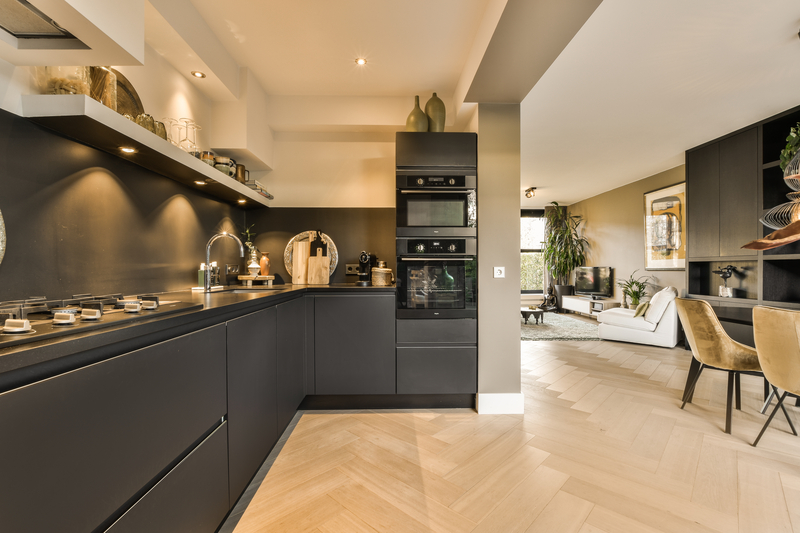
Introduction to Kitchen Remodels
A kitchen remodel is one of the most impactful investments you can make in your home, but understanding the kitchen remodel cost is essential before you begin. The average kitchen remodel cost can vary dramatically, with most projects falling between $15,000 and $50,000 depending on the size of your space, the quality of materials, and the complexity of the remodel. Labor costs often make up a significant portion of the total cost, sometimes accounting for 30-50% of your project budget.
When planning your kitchen remodel, it’s important to consider how choices like cabinet style, material quality, and kitchen appliances will affect both your budget and the final result. Whether you’re drawn to sleek modern cabinets or classic solid wood, the materials you select will influence not only the look and feel of your kitchen but also the overall project cost. Appliances, too, can range from budget-friendly to high-end, so it pays to shop smart and prioritize features that matter most to your lifestyle.
By carefully weighing your options and setting a realistic budget, you can ensure your kitchen remodel delivers the style, functionality, and value you want—without unexpected surprises. Understanding the average cost, labor requirements, and material choices up front will help you make informed decisions and keep your project on track from start to finish.
Kitchen Renovation Options
When it comes to kitchen renovation, homeowners have more options than ever to create a space that fits their needs, style, and budget. A minor kitchen remodel might focus on simple updates like swapping out cabinet hardware, applying fresh paint, or installing new flooring—small changes that can make a big impact without a hefty price tag. On the other end of the spectrum, a full remodel could include custom cabinetry, quartz countertops, and high-end appliances, transforming your kitchen into a true luxury kitchen.
Choosing the right kitchen renovation option depends on your goals and your realistic budget. If you’re looking to boost your home’s resale value, even a minor kitchen remodel can offer a strong return on investment, especially when you focus on timeless design choices and quality materials. For those dreaming of a complete transformation, working with a professional kitchen designer can help you balance your wish list with your project budget, ensuring every detail—from cabinet style to appliance selection—aligns with your vision and financial plan.
Whether you’re updating a small kitchen with clever storage solutions or planning a full remodel for a larger space, today’s kitchen renovation options make it possible to achieve your dream kitchen at nearly any price point. By prioritizing the features that matter most to you—be it custom cabinetry, quartz countertops, or simply a fresh, modern look—you can create a kitchen that’s both beautiful and functional for years to come.
Smart Budget Planning for Maximum Savings
Setting a realistic budget forms the foundation of any successful cost-saving kitchen remodel. Understanding current market realities helps you make informed decisions that protect both your finances and your home’s resale value. For many homeowners, it makes sense to adopt budget strategies that align with their needs and the expected return on investment.
The kitchen remodel cost landscape in 2025 shows significant variation based on scope and approach. While luxury kitchens can exceed $150,000, cost-conscious homeowners typically spend between $15,000 and $25,000 for a complete makeover, with the lower end of kitchen remodel budgets starting around $10,000 for basic updates. This contrasts sharply with the average kitchen remodel cost of $45,000 for mid-range full redesigns, making strategic planning essential for budget-minded renovators.
The 20% Rule and Home Value Protection
Industry experts recommend following the “20% rule” to maintain your home’s resale value. Your total project cost should not exceed 20% of your home’s current market value. For a $300,000 home, this means keeping your project budget under $60,000. By following this rule, you help protect the value of your house through smart investment decisions. This guideline ensures you don’t over-invest in a single room, especially important in fluctuating real estate markets.
Essential Budget Components
Every realistic budget must include several key components beyond material costs:
- Labor costs: Typically 30-50% of total project budget
- Permit fees: Usually $500-$2,000 depending on scope and location
- Contingency fund: Always set aside 15% for unexpected discoveries
- Temporary accommodations: Budget $300-$800 for temporary kitchen setup during construction
Tracking every expense using spreadsheets or dedicated apps prevents budget creep—one of the most common reasons kitchen remodeling projects exceed their original estimates. Many homeowners find that meticulous expense tracking reveals opportunities for additional savings throughout the project.
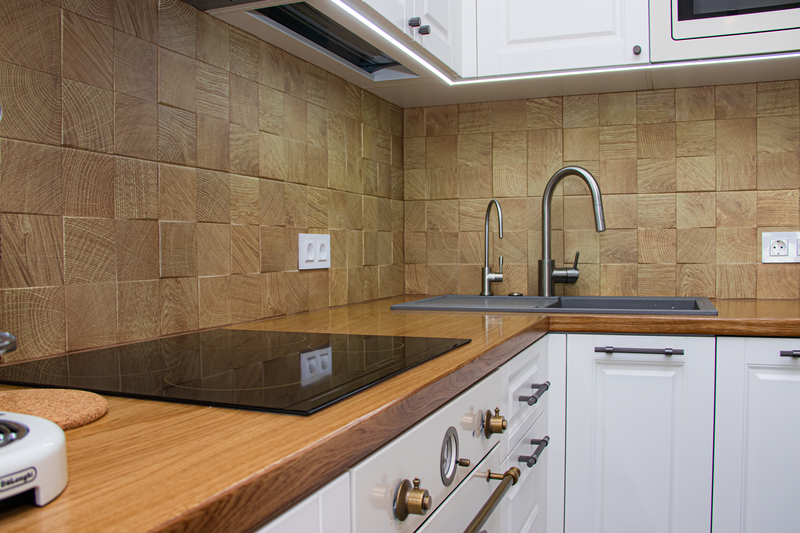
Keep Your Existing Layout to Save Thousands
Maintaining your kitchen’s footprint is the single most impactful way to control remodeling cost. By keeping the kitchen’s footprint unchanged, you can save $10,000 to $20,000 compared to layouts requiring major structural or utility changes.
Avoiding Costly Infrastructure Changes
Moving major elements triggers expensive domino effects throughout your entire kitchen:
Plumbing modifications cost $3,000 to $8,000 for relocating major elements like the sink or dishwasher due to floor demolition and pipe rerouting. Electrical rewiring adds $1,500 to $4,000 when outlets or appliance connections need relocation. Gas line adjustments for ranges require $800 to $2,500 for professional installation and safety inspections.
Maximizing Impact Within Existing Constraints
Smart designers focus improvements on surfaces, fixtures, and kitchen appliances rather than structural changes. This approach delivers significant visual and functional improvements at a fraction of the cost. Consider how fresh paint, updated cabinet hardware, and modern light fixtures can dramatically transform your space without touching a single wall or utility line.
Working within your current layout also means faster project completion, reducing both labor costs and the inconvenience of extended construction periods.
Cabinet Cost-Cutting Strategies
Kitchen cabinets often consume 25-35% of your total project budget, making this category crucial for cost-conscious planning. In fact, cabinetry is frequently the most expensive part of many kitchen remodels, so finding savings here can have a major impact on your overall costs. Fortunately, several proven strategies can dramatically reduce cabinet expenses while maintaining quality and style.
Refacing vs. Replacement
Cabinet refacing offers one of the best value propositions in kitchen remodeling. This process keeps existing solid wood cabinet boxes while adding new doors, drawer fronts, and veneer surfaces. Quality refacing typically costs $4,000 to $9,000—less than half the price of full cabinet replacement at $15,000 and up.
DIY Painting for Maximum Savings
Fresh paint provides the most dramatic transformation per dollar spent. High-quality primer and paint materials cost under $500 for most kitchens, while professional painting services add $2,000 to $4,000 in labor costs. This represents potential savings of 75-80% for homeowners willing to invest weekend time in preparation and application.
Smart Shopping Strategies
Stock cabinets from major retailers like Home Depot, Lowe’s, and IKEA cost 40-60% less than custom cabinetry. Ready-to-assemble (RTA) cabinets provide additional 20-30% savings for DIY-capable homeowners. While these options offer fewer customization possibilities, they deliver excellent value for standard kitchen layouts.
Simple cabinet hardware updates—modern pulls and knobs—create instant visual impact for under $200. Shop smart by sourcing hardware during off-season sales or from online suppliers offering bulk discounts.
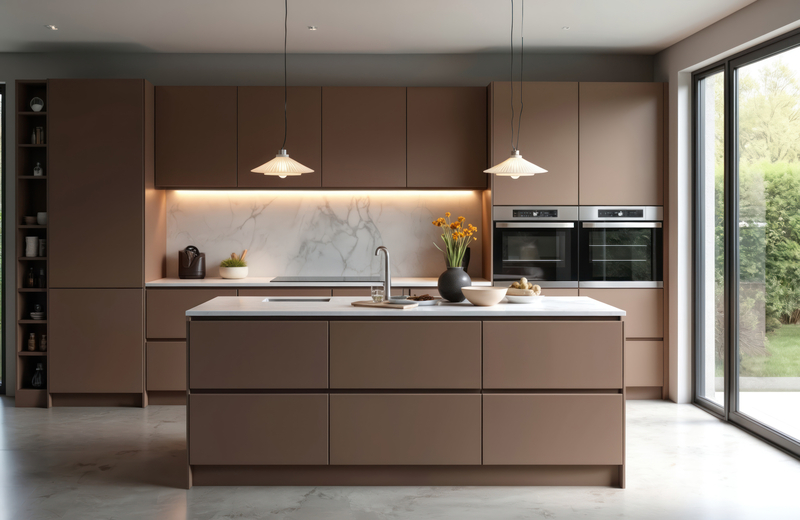
Affordable Countertop Alternatives
Countertop selection significantly impacts both aesthetics and project budget. Replacing countertops is a popular kitchen upgrade that can refresh your space and add value without the expense of a full remodel. Understanding material options and their cost implications helps you make informed decisions that balance style with savings.
Material Cost Comparisons
Laminate countertops remain the most cost-effective choice at $20-$50 per square foot, compared to granite’s $40-$100 per square foot. Modern laminate offers vast design options and proves surprisingly durable for budget-conscious renovators.
Butcher block provides warmth and natural beauty at $25-$40 per square foot—markedly less than quartz countertops at $50-$90 per square foot. While requiring more maintenance, butcher block appeals to homeowners seeking affordable natural materials.
Concrete countertops offer customizable, modern aesthetics as a DIY project. Material costs range $65-$135 per square foot including forms, reinforcement, and sealers, but require significant skill and patience for successful installation.
Money-Saving Shopping Tips
Remnant shopping provides discounts of 50-70% for small kitchen spaces or islands. Local fabricators often sell leftover pieces from larger projects at substantial savings. Tile countertops, while less trendy, offer practical solutions at $5-$15 per square foot for capable DIY installers.
Appliance Shopping on a Budget
Kitchen appliances represent another major expense category, but strategic shopping can yield substantial savings without compromising quality or functionality.
Timing Your Purchases
The largest discounts—often 20-40%—occur during major holiday promotions including Memorial Day, Labor Day, and Black Friday. Scratch-and-dent appliances from reputable retailers offer 30-50% off retail prices while maintaining full manufacturer warranties.
Previous-year models get marked down when new lines launch, typically in mid-spring and early fall. These appliances often feature identical functionality to current models at significant savings.
Alternative Shopping Strategies
Bundling appliances from the same manufacturer unlocks package deals and rebates. Certified refurbished units provide warranty protection at reduced costs. For functional existing appliances, consider gradual upgrades over 2-3 years to spread investment and avoid overwhelming your project budget.
Money-Saving Material Choices
Strategic material selection creates compound savings throughout your kitchen makeover. Understanding where to invest and where to economize helps maximize your budget impact.
Flooring Alternatives
Luxury vinyl plank (LVP) flooring mimics hardwood appearance at $2-$7 per square foot versus $8-$15 per square foot for genuine hardwood. LVP offers waterproof properties particularly valuable in kitchen environments. For small kitchen layouts, such as a galley kitchen, LVP is an especially affordable and practical flooring option.
Backsplash and Fixture Savings
Classic white subway tile delivers timeless appeal at $3-$6 per square foot compared to natural stone at $8-$20 per square foot. Brushed nickel fixtures typically cost less than trendy finishes while maintaining broad appeal and availability.
Smart shoppers time purchases for end-of-season clearances when flooring sees winter discounts and tiles get marked down in late summer. Discount retailers like Floor & Decor consistently offer 30-50% savings compared to boutique design centers.
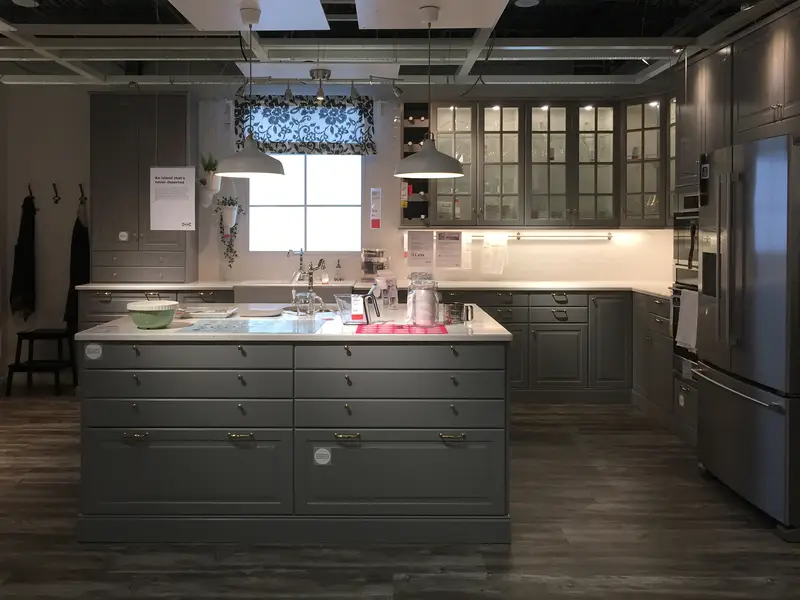
Strategic DIY vs. Professional Tasks
Understanding which tasks you can safely handle yourself versus requiring professional expertise helps optimize your labor costs—typically 30-50% of total project budget.
For complex kitchen remodels, hiring professional design services can be especially valuable, as these experts help streamline the planning and execution process, improve the final outcome, and may even help manage overall project costs.
DIY-Friendly Projects
Cabinet painting saves $2,000-$4,000 in professional labor costs while requiring only basic painting skills. Hardware installation makes an excellent weekend project needing just a drill and screwdriver. Simple backsplash tiling and lighting fixture replacement offer high visual impact for modest skill requirements.
Professional Requirements
All electrical work, plumbing modifications, gas line connections, and structural changes require licensed professionals for safety and code compliance. Attempting these tasks without proper expertise risks costly mistakes and potential liability issues.
Semi-DIY Opportunities
Demolition work, material delivery coordination, and basic site preparation offer middle-ground opportunities for capable homeowners. Managing 40-60% of labor yourself can reasonably save $5,000-$15,000 on mid-range remodels.
Investing in quality tools pays dividends both in project efficiency and future usability. Essential tools include circular saws, cordless drills, and tile cutters for comprehensive kitchen renovation projects.
Timing Your Remodel for Maximum Savings
Market timing significantly impacts both material costs and contractor pricing. Understanding seasonal patterns helps stretch your project budget further. For larger kitchens, which often involve more complex layouts and features, advance planning and scheduling are especially important due to the increased scope and complexity of the remodel.
Contractor Scheduling
Winter months from January through March often bring 10-20% labor discounts as demand decreases and contractors compete for work. Conversely, April through September represents peak season with higher demand driving premium pricing and reduced schedule flexibility.
Booking reputable contractors 3-6 months ahead during off-season provides better rates and stronger negotiating positions. This advance planning also allows time for thorough vetting and reference checking.
Material Purchase Timing
Flooring sees best pricing in winter months, while cabinetry and fixtures often get clearanced in late summer and post-holiday periods. Coordinating purchases with manufacturer sales cycles and warehouse clearances can yield additional 15-25% savings.
Hidden Costs to Avoid
Successful budget planning accounts for easily overlooked expenses that can derail even well-planned projects. Understanding these hidden costs prevents unpleasant surprises.
Temporary Accommodations
Temporary kitchen setup including mini-fridges, microwaves, and paper goods typically costs $300-$800. Increased dining expenses during 2-6 week construction periods can add $500-$2,000 to total project cost. Planning alternative meal strategies helps control these necessary but often forgotten expenses.
Administrative and Utility Costs
Permit and inspection fees, HOA approval requirements, and utility shut-off/reconnection expenses add $600-$2,400 to most projects. Disposal costs through dumpster rental average $300-$600 depending on project scale and regional pricing.
Unexpected Discoveries
Outdated wiring, hidden plumbing problems, or structural issues frequently emerge once walls open up. These discoveries can add thousands in unplanned expenses, making the 15% contingency fund essential rather than optional.
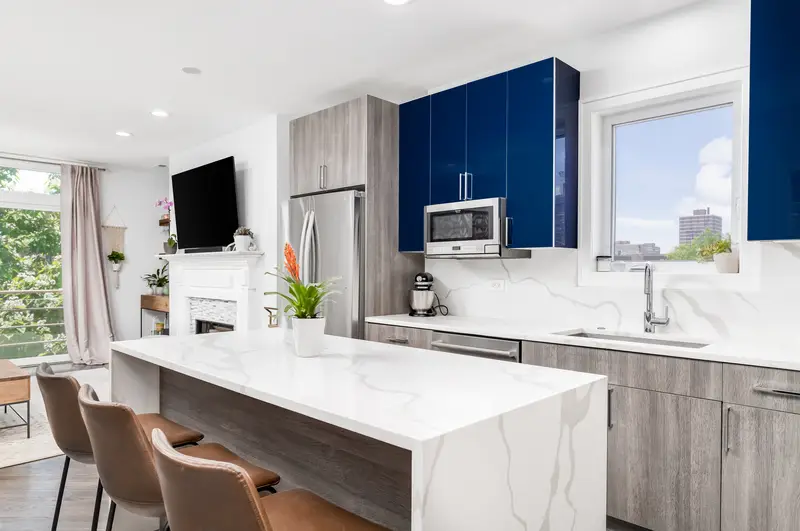
Financing Your Cost-Effective Remodel
Selecting appropriate financing helps optimize your total project cost and cash flow management.
Cash vs. Financing Options
Cash payment eliminates interest charges and origination fees, making it the most cost-effective approach when available. 0% APR credit cards provide interest-free periods if balances can be paid within promotional timeframes.
Personal loans for $10,000-$25,000 projects offer fixed monthly payments and predictable terms. Home equity lines of credit (HELOCs) provide access to larger amounts at lower interest rates, with payment only on drawn amounts.
Rebate Opportunities
Many states and utilities offer rebates for energy-efficient appliances, potentially providing $200-$1,500 in additional savings. Research local programs before making appliance purchases to maximize available incentives.
Getting the Best ROI on Your Investment
Understanding return on investment helps prioritize improvements that add the most value to your home while staying within budget constraints. According to a recent value report, homeowners can use industry data to estimate the percentage of costs recouped from kitchen remodels and the potential impact on resale value.
Universal Design Elements
Neutral cabinet and wall colors including white, gray, and beige appeal to the broadest buyer range. Quality investments in visible, high-use areas like faucets, lighting, and cabinet hardware produce greater perceived value than hidden upgrades.
Well-planned, cost-conscious kitchen remodels typically return 60-75% of investment at resale, outperforming luxury upgrades that only recoup 50-60%. This makes budget-focused approaches not just financially prudent but also strategically smart for long-term home value.
Documentation and Warranties
Maintaining detailed before/after photos and organized receipts helps with insurance coverage and can be shared with future buyers. Preserving warranties and transferring them during resale also boosts buyer confidence and justifies asking prices.
Current Trends and Future Outlook
The 2025 kitchen remodel landscape continues evolving with several trends supporting cost-conscious approaches. Open-concept layouts and multi-functional spaces remain popular, influencing material choices for maximum flexibility and resale appeal.
Durable, low-maintenance surfaces including improved laminates and luxury vinyl continue gaining market share. RTA cabinets and DIY-friendly materials grow in popularity as more homeowners seek labor cost savings and project control.
Remote work trends increase demand for kitchen spaces doubling as homework or office areas, leading to creative island use and modular furniture integration. These functional considerations often provide more value than purely aesthetic upgrades.
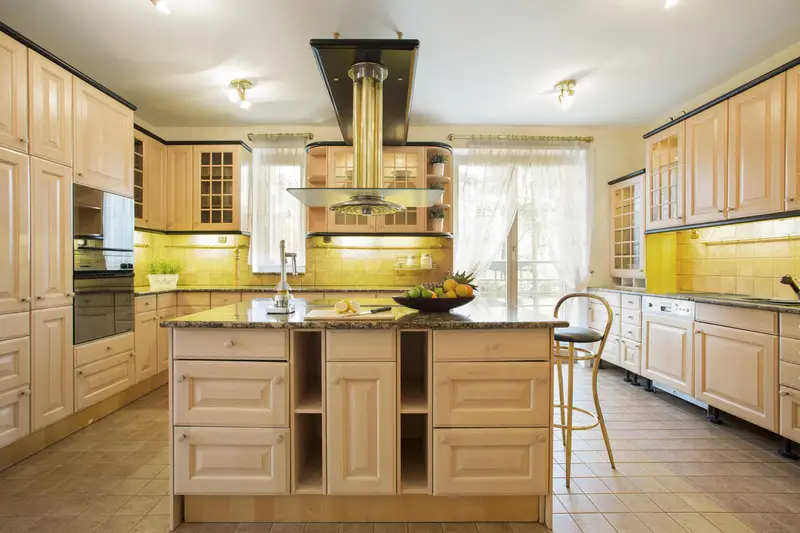
Conclusion
Creating your dream kitchen on a budget requires strategic planning, smart material choices, and understanding where to invest versus where to save. By following the 20% rule, maintaining your existing layout, and focusing on high-impact updates like cabinet refacing and quality hardware, you can achieve stunning results for $15,000-$25,000 instead of the $45,000+ national average.
The key to a successful cost-saving kitchen remodel lies in thorough planning, realistic budgeting with contingencies, and knowing which tasks to tackle yourself versus hiring professionals. Whether you’re updating a small kitchen or transforming a large kitchen space, these strategies help maximize every dollar while creating a space you’ll love for years to come.
Start your project by assessing your current layout, setting a realistic budget with proper contingencies, and researching local contractors during their slow season. For a smooth and satisfying remodeling experience, be sure to choose professionals who are known for exceptional customer service, as their personalized guidance and commitment to quality can make all the difference. With careful planning and smart shopping, your ultimate cost-saving kitchen remodel can deliver exceptional results that enhance both your daily life and your home’s value.
